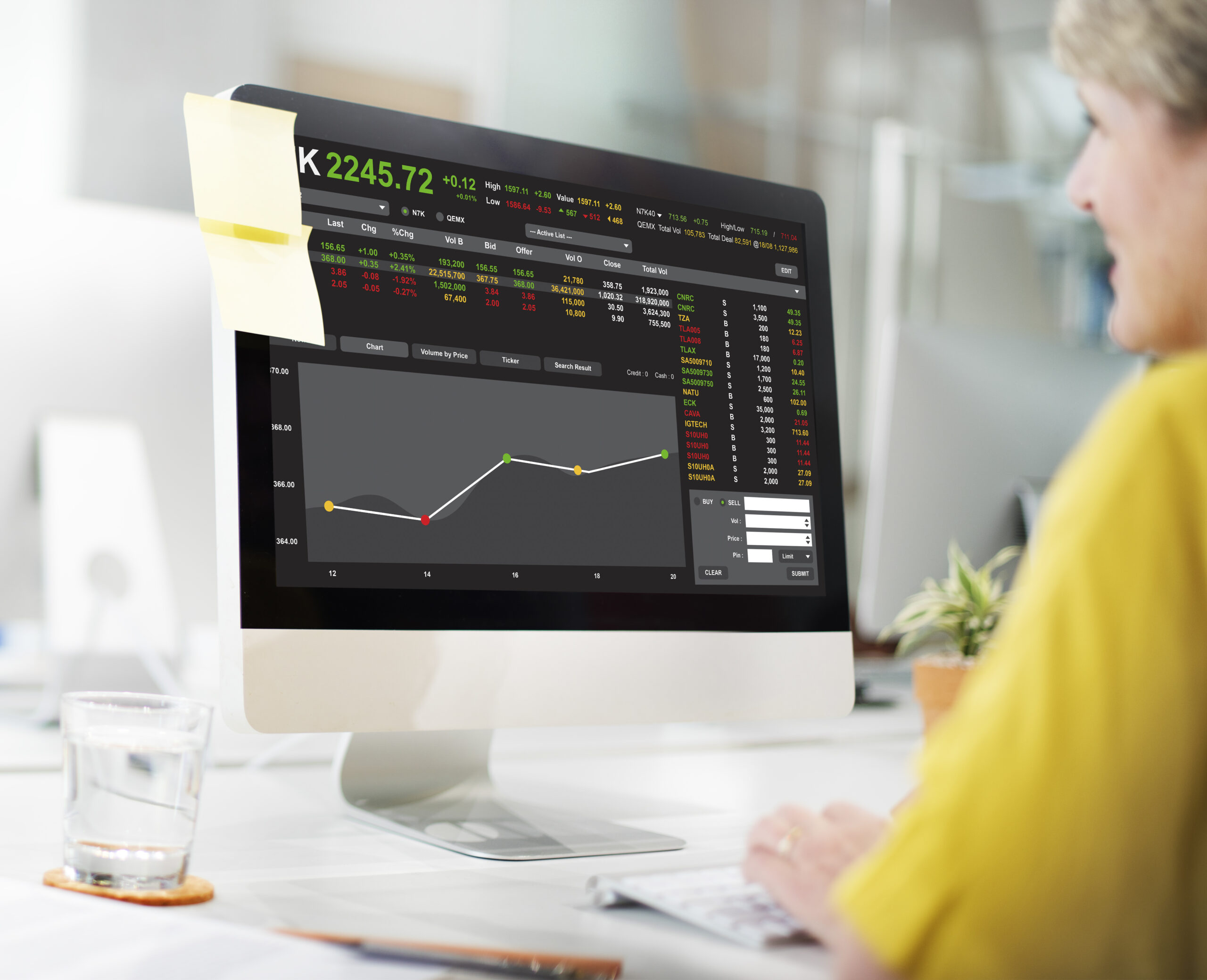The financial markets can be complex and dynamic. Traders, constantly striving to make informed decisions, have developed a rich set of tools to analyze price movements and identify potential opportunities. Technical indicators leveraging historical price and volume data to generate signals are a cornerstone of this analytical toolkit.
While dozens of indicators are available, some stand out for their versatility and effectiveness. This blog delves into eight essential indicators for stock trading strategy, from beginners to seasoned veterans. With a solid grasp of these tools, you’ll be well-equipped to navigate the ever-shifting market landscape.
1. Moving Average (MA): A Simple Yet Powerful Trend Gauge
The moving average (MA) is a foundational indicator that smooths out price fluctuations, revealing the underlying trend. It’s calculated by averaging a security’s closing price over a chosen period, such as 50 or 200 days. A rising MA suggests an uptrend, while a falling MA indicates a downtrend.
There are various types of MAs, with the Simple Moving Average (SMA) being the most basic. The Exponential Moving Average (EMA) places more weight on recent prices, making it more responsive to current market conditions.
2. Exponential Moving Average (EMA): Reacting Faster to Price Changes
The EMA assigns a greater weight to more recent closing prices, making it more reactive to current market movements compared to the SMA. This responsiveness is particularly valuable in volatile markets where trends can shift quickly. Traders often use a combination of SMAs and EMAs to identify both the overall trend and shorter-term fluctuations within that trend.
3. Bollinger Bands (BB): Identifying Volatility and Potential Breakouts
Bollinger Bands (BB) are a three-line indicator that uses the volatility of a security’s price to create a dynamic trading channel. The center line is an SMA, typically for a 20-day period. The upper and lower bands are positioned two standard deviations away from the center line. When the bands contract, it suggests a period of low volatility. Conversely, widening bands indicate increased volatility, potentially foreshadowing a breakout from the current trading range.
4. Relative Strength Index (RSI): Gauging Overbought and Oversold Conditions
The Relative Strength Index (RSI) is an oscillator that measures the magnitude of recent price changes to identify overbought or oversold conditions. It generates a value between 0 and 100. Generally, an RSI reading above 70 suggests the asset may be overbought and primed for a potential correction. Conversely, an RSI below 30 indicates oversold conditions, potentially hinting at a buying opportunity.
5. Standard Deviation (SD): Quantifying Volatility
Standard deviation (SD) is a statistical measure of how spread out data points are from the mean (average). In the context of trading, it quantifies a security’s price volatility. A high SD indicates significant price fluctuations, while a low SD suggests a more stable price movement. Traders often use SD in conjunction with Bollinger Bands for a more comprehensive understanding of volatility.
6. Average Directional Index (ADX): Assessing Trend Strength
The Average Directional Index (ADX) is a unique indicator that helps identify the strength of a trend, regardless of its direction (up or down). It consists of three lines: the ADX line, the Positive Directional Indicator (+DI), and the Negative Directional Indicator (-DI). A rising ADX line with a higher +DI than -DI suggests a strong uptrend, while the opposite scenario indicates a strong downtrend. A flat ADX line suggests a weak or choppy trend.
7. Stochastic Oscillator: Zooming in on Overbought and Oversold Levels
The Stochastic Oscillator is another oscillator that measures the relationship between a security’s closing price and its price range over a specified period. Similar to the RSI, it generates a value between 0 and 100. Readings above 80 suggest overbought conditions, while readings below 20 indicate oversold conditions. While similar to the concept of RSI, the Stochastic Oscillator can sometimes provide more precise signals, particularly for short-term stock trading strategy.
8. Ichimoku Cloud: A Multifaceted Trend Following Tool
The Ichimoku Cloud is a comprehensive indicator combining multiple data points to generate a trading cloud and other lines to provide a multi-faceted view of the market. While it has a steeper learning curve compared to other indicators, the Ichimoku Cloud can be a powerful tool for identifying trends, support and resistance levels, and potential entry and exit points.
Building Your Stock Trading Strategy
These eight indicators offer a valuable starting point for any trader. However, no single indicator is a foolproof predictor of future price movements. The best stock trading strategy is to use a combination of indicators that complement each other and align with your trading style.
Here are some additional tips for using technical indicators effectively:
- Understand the limitations: Indicators are based on historical data and can generate false signals. Always consider other factors like fundamental analysis and market sentiment.
- Combine indicators: Don’t rely on a single indicator to make trading decisions. Use a confluence of indicators to strengthen your conviction before entering or exiting a trade.
- Backtest your strategy: Test your chosen indicators with historical data to see how they would have performed in different market conditions. This helps you refine your strategy and identify potential weaknesses.
- Practice and be patient: Learning to use technical indicators effectively takes time and practice. Start with a demo account before risking real capital. Develop a disciplined trading plan and stick to it.
Conclusion
By understanding these core indicators and implementing them strategically, you’ll be well on your way to becoming a more informed and confident trader. Remember, the financial markets are a complex ecosystem. Continuous learning, discipline, and a healthy skepticism are key ingredients for long-term success.
Visit the official website of Abbo News to keep yourself updated on crucial information related to financial markets and more.
Peter Williams, a financial writer with over five years of experience, specializes in covering stock market movements, bond markets, commodities, and macroeconomic trends. Read Full Bio










